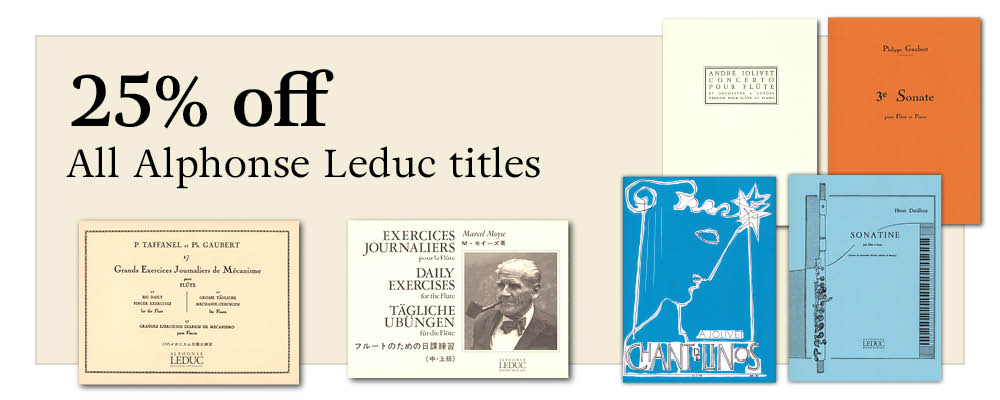The Flutist's Vade Mecum of Scales, Arpeggios, Trills and Fingering Technique
- Sale
From the Publisher
Second edition. The Flutist's Vade Mecum of Scales, Arpeggios, Trills and Fingering Technique is a new, all-encompassing approach to the study and perfection of scale, arpeggio, and trill technique. As the author explains in the introduction of this 96-page volume, "This book is intended not just for the initial learning of scales and arpeggios but for permanent and ongoing improvement of this material through diligent review. Each section is preceded by advice regarding the most appropriate practice methods (10 pages of explanatory text). Think of this Vade Mecum ("Go with me" in latin) as a steady companion, always available for review and renewal."
In addition to an 18-page core section devoted to basic major, minor, whole-tone and chromatic scales, major and minor broken thirds (including their inversions), the four triads, and diminished and dominant seventh chords, the Vade Mecum also highlights the following topics:
- Regular Coverage of the extremes of the flute range (low B, C, C# and attissimo B, C, C#, and D).
- Expanded vocabulary of scales, including modal, pentatonic, diminished, blues and Hungarian minor.
- Specific instruction on the use of atternate and "facilitating" fingerings.
- Explicit notation of wide-ranging articulations and dynamics in the "Basic Scales and Arpeggios" section.
- The use of five and seven-note groups, and odd meters.
- Broken 4ths, 5ths and 6ths and their inversions.
- All triads and 7th chords presented in regular, inverted and broken form.
- Learning to make accurate rhythmic changes through "composed" accelerandos and ritardandos of scales.
- Trill exercises featuring the "measured" trill approach.
- Expanding interval studies for warm-ups.
- Repetition pattern studies on all intervals.
- Applying 25 different variations to 36 "triad with lower neighbor" sequence patterns.
- Excerpts from Bach, Beethoven, Mendeissohn, Mozart, Prokofiev, and Ravet, annotated with speciai fingerings.
- Broken chromatic minor and major 3rds and~= perfect 4ths.
- Consecutive tri-tone, perfect 4th and perfect 5th intervals.
"A refreshing skeptic to the dogmatic proponents of 'one note, one fingering', Kujala enjoys, as I do, devising alternate fingerings for quality, smoothness, intonation, and, I suspect, for fun... Above all, Kujala is a scientist of the flute, a thorough researcher, an experimenter, and a tolerant author who is not obsessed with certitudes, either his own or those of prior generations."
-Michel Debost, Flute Talk, Feb. 1996
Item Details
Our Stock Code: 1023695Instrumentation
- Part 1: Flute
Category: Flute Scale Practice Books
Publisher: Progress Press
Media Type: Paperback
Country of Origin: USA
HS Code: 49040000



